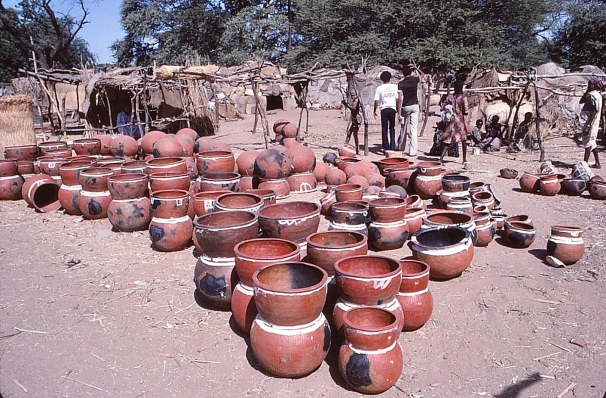
Menu

Sudanese traditional pottery is a timeless art form that reflects the daily life, history, and creativity of rural communities across Sudan. For generations, potters—mainly women—have shaped clay into practical and decorative objects using ancient techniques passed down through families.
In villages along the Nile and in regions like Darfur and Kordofan, pottery remains an essential part of domestic life. Handmade without a potter’s wheel, the process begins by kneading local clay, often mixed with sand or crushed stone for strength. The potter then molds it into shape using simple tools and their hands. After drying under the sun, the vessels are fired in open-air kilns, giving them their earthy brown or reddish tones.
These pots serve many purposes—storing water, cooking food, and preserving grains. The zir, a large water storage vessel, is especially iconic. Its porous surface allows for natural cooling, making it an essential household item in Sudan’s hot climate. Decorative touches such as etched lines, dots, or painted designs are added before firing, blending function with artistry.
Sudanese pottery is not only practical but deeply cultural. Each region has its own shapes, sizes, and motifs, reflecting local traditions and lifestyles. The designs often carry symbolic meanings—waves representing water, circles for fertility, or zigzags for protection. Some pots are even used in rituals, weddings, or as grave offerings, linking them to spiritual beliefs.
In recent years, globalization and plastic alternatives have threatened the survival of traditional pottery. Yet, many artisans and cultural organizations are working to revive and promote it. Markets and craft fairs now feature handmade Sudanese ceramics, attracting attention from both locals and tourists.
Sudanese traditional pottery is more than just clay—it is a living tradition that embodies resilience, identity, and artistic spirit in every curve and pattern.



